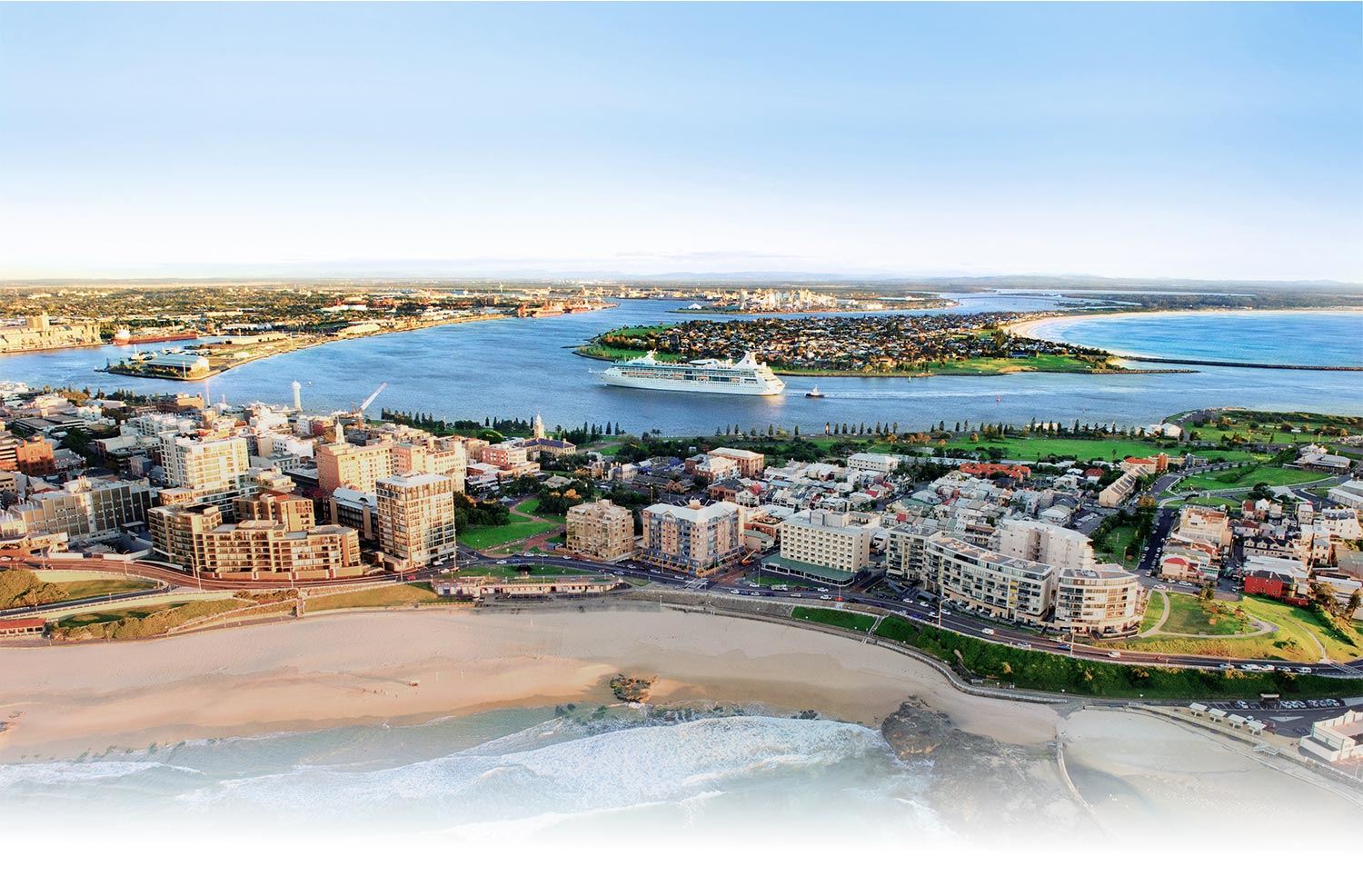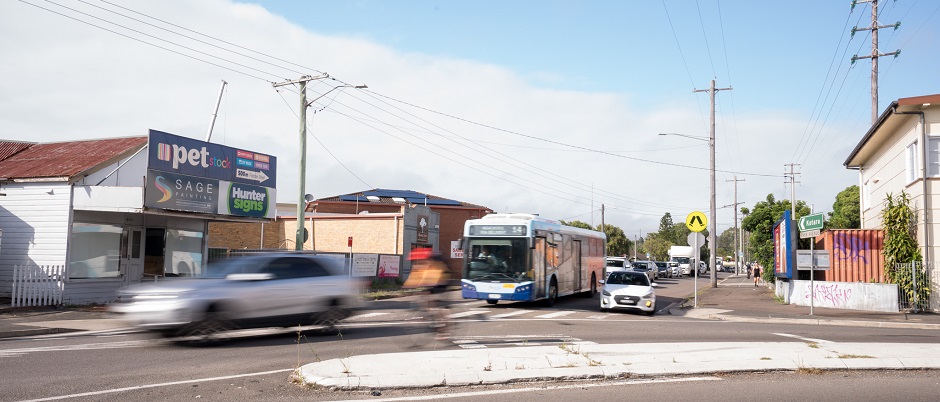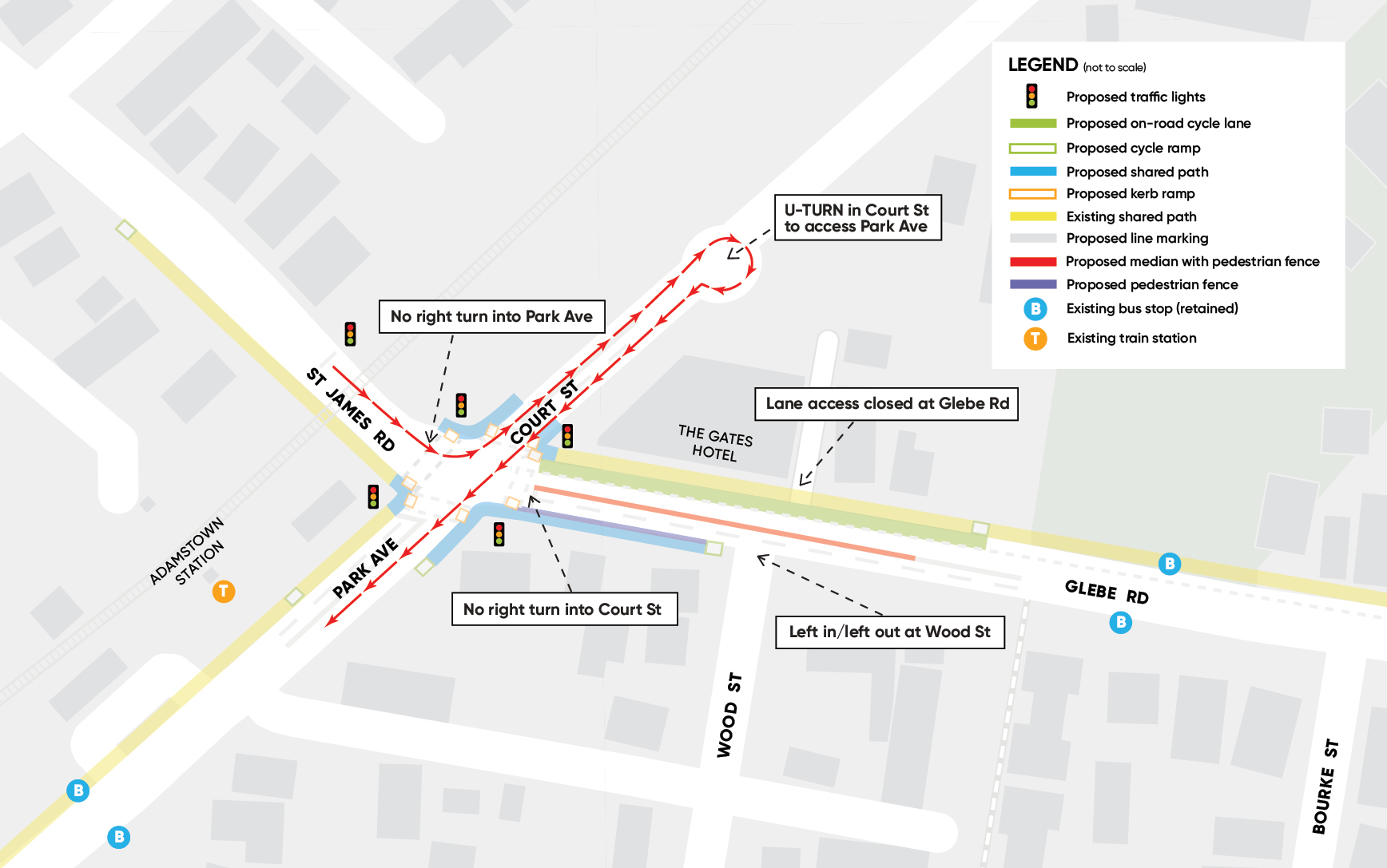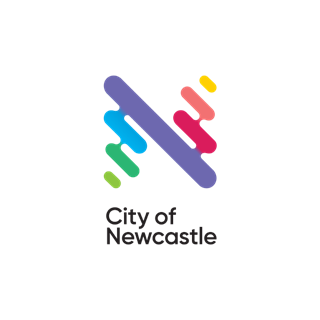
Glebe Road, Adamstown - safety improvements

Construction work on Glebe Road and Court Street, Adamstown has started to prepare for the installation of traffic lights at the intersection of Glebe Road and Park Avenue.
These upgrades will help to reduce vehicle crashes and improve accessibility for pedestrians and cyclists by providing an improved connection to local schools, Adamstown Train Station, bus stops, local businesses, and enhance the link between the city and Fernleigh Track.
The below preliminary works have been completed:
- kerb and footpath upgrades on the southern side of Glebe Road between Park Avenue and Wood Street
- renewed drainage in the area
- new cul-de-sac arrangement in Court Street
- road resurfacing
- utilities investigation work was also completed in 2023.
Next steps
We are working with Sydney Trains to integrate the traffic lights with a proposed signal upgrade at Adamstown railway level crossing.
Before the lights are switched on, we will construct a median on Glebe Road to prevent right hand turns into and out of Wood Street.
Upgrades to improve safety for everyone
When the traffic lights are operational, the new cul-de-sac in Court Street will allow eastbound traffic to turn left into Court Street, travel around the cul-de-sac and proceed through the intersection on the next green signal. This will assist eastbound traffic on Glebe Road to access the Adamstown area.
This change to traffic flow will replace the right turn at Wood Street, which will be removed to improve safety (to read more about this go to our FAQs below).
More information will be provided to the community as planning progresses.
This project is joint funded with the Australian Government Black Spot Program.
 New direction of traffic for access to Park Avenue from St James Road
New direction of traffic for access to Park Avenue from St James Road











